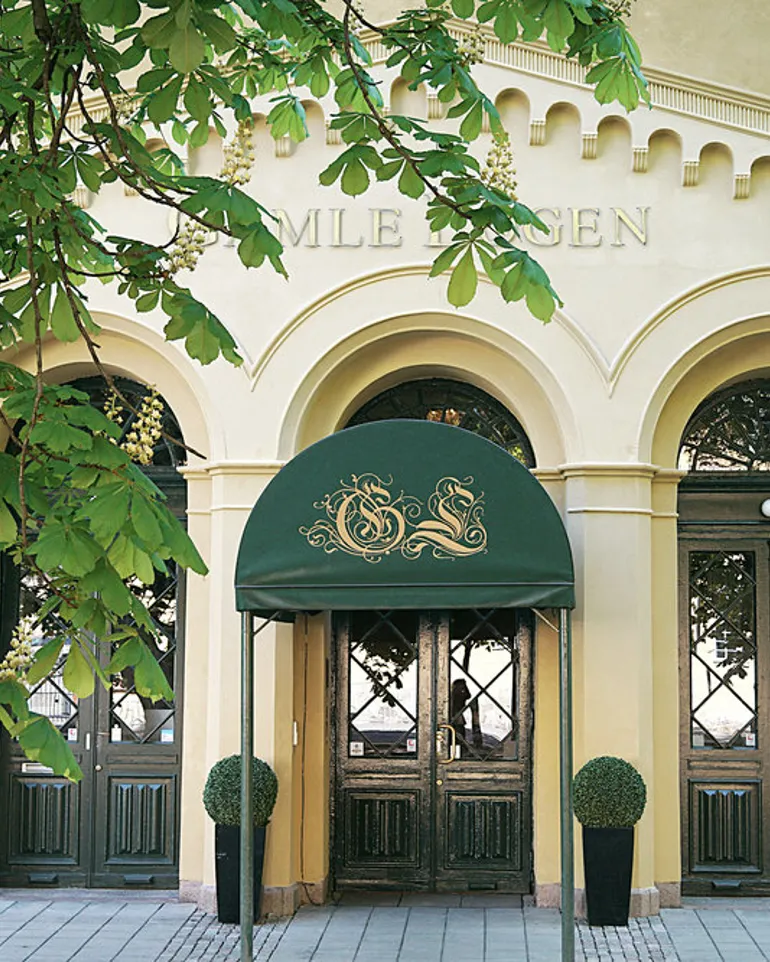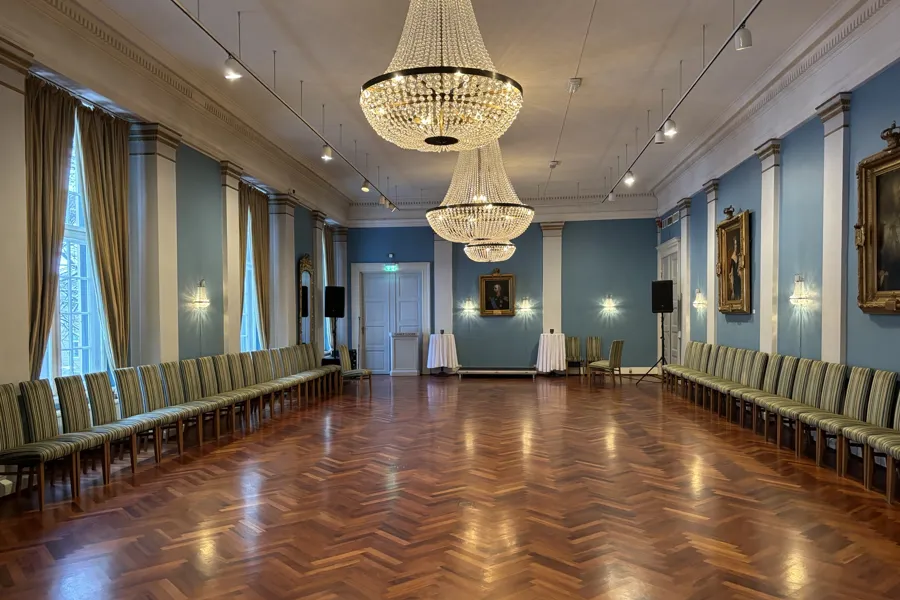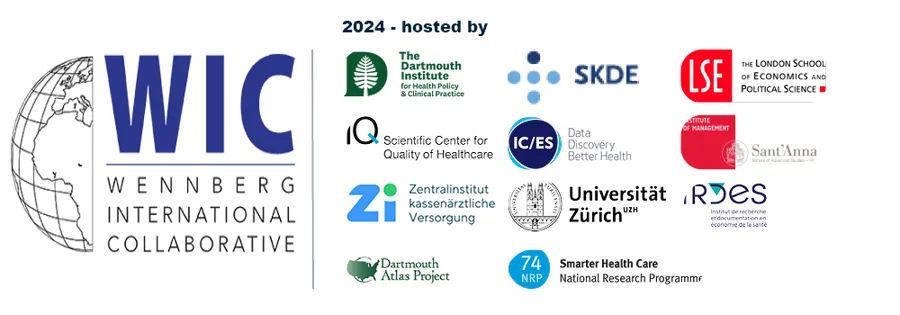The 11th Fall Research Meeting of the Wennberg International Collaborative
The 2024 Wennberg International Collaborative Conference, hosted by Centre for Clinical Documentation and Evaluation (SKDE), took place in Oslo, Norway, from September 11th to September 13th.
- 11. sep. 2024, 12:00 - 16:30
- 12. sep. 2024, 09:00 - 17:00
- 13. sep. 2024, 09:00 - 13:00
Tid og sted
Når
- 11. sep. 2024, 12:00 - 16:30
- 12. sep. 2024, 09:00 - 17:00
- 13. sep. 2024, 09:00 - 13:00
Thank you for attending WIC 2024
Thank you all for attending the 11th Fall Research Meeting of the Wennberg International Collaborative!
Your active participation and insightful contributions made the event truly special. We hope you found the sessions valuable and look forward to seeing you at future events.
Best regards,
The WIC 2024 Oslo meeting planning committee

Foto: Shutterstock
The conference, which is held every fall, brings together international healthcare experts and connects researchers and policy makers in the healthcare field. Furthermore, the conference provides the opportunity for the participants to be inspired, gain new perspectives and updated knowledge in their professional fields. This build a strengthened community through network building, and opportunities for development and collaboration.
The Wennberg International Collaborative (WIC) was founded in 2010 by Dr. David Goodman of The Dartmouth Institute for Health Policy & Clinical Practice (U.S.) and Professor R. Gwyn Bevan of the London School of Economics and Political Science (U.K.). The inaugural meeting was held at the London School of Economics and Political Science in 2010.
The goal of the Collaborative is to accelerate research into the causes and consequences of unwarranted health care variation across regions and providers. The WIC was initiated in response to the complex and often controversial nature of this research.
The Collaborative seeks to reduce barriers in the field through sponsoring research and policy meetings, facilitating collaboration amongst members, advocating for healthcare data availability, and serving as a clearinghouse for research and policy findings. The primary focus of the WIC is variation in health system performance within countries, although some members also examine variation across countries. The WIC is a community of scholars and policymakers (and their interests, ideas, and technical capabilities) that provides support to emerging investigators and projects. Presentation topics during meetings range from new critical questions, novel methods, recent findings, and innovative policy and improvement ideas.
Centre for Clinical Documentation and Evaluation (SKDE) was established in 2004 and celebrates its 20th anniversary this year.
SKDE contributes to highlighting geographical inequalities in the specialist healthcare service in Norway, and the aim is to contribute to equal healthcare services of good quality, regardless of where the patients live. Among SKDE’s primary tasks is to produce Health Atlases that provide an overview of how the use of specialist healthcare varies geographically in Norway.
SKDE has several ongoing research projects within various fields: cardiovascular diseases, cancer, mental health, and musculoskeletal disorders. These projects study the geographical and socio-economical variation in healthcare services and attempt to explain these variations.
SKDE has also been tasked with leading an interregional effort to reduce examinations and treatments with low value or uncertain health benefits. The reduction is intended to be implemented nationally, ensuring uniformity for all patients.
The National competence unit for Medical Quality Registers is organized in SKDE and is a center of expertise that offers support with the establishment and operation of national clinical quality registers.
The centre has a total of 38 employees, led by Director Eva Stensland, and is located in Tromsø, Norway.
The 2024 WIC Fall Meeting Agenda is now online. Changes may occur.
Abstractbok WIC 2024 FINAL.pdf
The 2024 Fall Research Meeting of the Wennberg International Collaborative is organized around four themes.
-
Low Value Care
Theme leader – Gwyn Bevan
Low value care interventions are those where any benefit is greatly outweighed by possible harm and costs. Analyses continue to find high rates of unwarranted variations across regions and providers of low value care in diagnoses, procedures, and medication use. Hence there is an opportunity to use this analysis to redeploy resources from harming to benefit patients with effective care. We welcome papers that explain the causes and consequences of low value care, and explore ways of reducing its volume.
-
Public reporting of health care variation and health provider performance
Theme leader – David Goodman, Hanover, NH USA
The widespread implementation of systems to measure health care interventions across regions and providers has generated a large quantity of information about health system performance over time and place. In many instances, the data is specific enough to produce quality and/or efficiency indicators at the level of hospitals or physicians, or in small enough health service areas that the responsible clinical organization can be identified. The availability of provider-specific information differs greatly by country and data source with some jurisdictions and health insurance plans promoting the regular publication of quality indicators while others discourage their release. The arguments used to support or prohibit measure release are related to ethics, the utility of the information, and issues of clinician confidentiality. In this session, we will discuss different models of public reporting and consider the opportunities and barriers in different settings.
-
Novel data and data linkage methods for health care evaluation
Theme leader – Therese Stukel, Toronto Canada
Population-based health care measurement across regions and providers commonly begins with the analysis of health administrative data that has been collected for billing purposes, but the scope and scale of these data differs across regions even within the same country. Some countries have access to rich population-based data that is linkable across health care sectors and time as well as across different domains such as health, education and justice. In many places, researchers and policy analysts have access to other rich data sources that can be linked to patients such as clinical registries, patient and provider surveys, and electronic medical data (EMR). In this session, we will explore the use of novel data sources and data linkage methods to enhance our understanding of the causes and consequences of unwarranted variation.
-
Economic analysis of unwarranted variation examines prices, spending, and costs (including travel times)
Theme leaders – Jostein Grytten, Olso Norway and Zeynep Orr, Paris France
The gold standard for cause-effect studies is randomized controlled experiments. For several reasons (ethical, financial and political), such experiments are difficult to carry out in studies of practice variation. Hence many studies rely on observational data (i.e. data in which exposure is determined in a different way than random assignment) but it difficult to establish causal inference from these data. Causal inference is required to answer questions such as: What is the impact of hospital payment on practice variation? What is the effect of a specific intervention (such as care protocols) in reducing variation in medical practice? To what extent does an increase in the number of beds increase variation? Econometricians have developed rigorous methods to examine causality using observational data.
For this session, we call for studies in which strategies for drawing causal inference from observational data have been used. We want to include studies that have used both experimental and quasi-experimental designs. Examples are difference-in-difference, regression discontinuity or instrumental variables methods. These methods can be challenging to use, and their use is not necessarily straightforward. The aim of the session is to discuss the potential benefits and limitations of these methods, as well as the results. We welcome all types of work, both work in progress and work nearly completed. If you have a draft of your work, we may be able to get somebody to give prepared comments.
Other sessions will be developed to appropriatey group meritorious papers on other topics.
Scientific Writing Workshop for Early Career Researchers
Pre-conference event of WIC Autumn Meeting in Oslo
What?
Join us for a Writing Workshop focusing on scientific papers in the field of healthcare variation. Participants will gain insights into structuring research articles and engage in hands-on training to develop their writing skills. The workshop will also provide opportunities for peer feedback and collaborative learning.
Why?
This is an opportunity for early career researchers to develop their writing skills and prepare articles for peer-reviewed publications.
Who Can Participate?
Undergraduate students and Masters or PhD candidates who have published a maximum of 3 articles in peer-reviewed journals, and are seeking guidance on a paper on regional variation in Health Care Services.
How to Apply?
Interested participants should submit for their paper:
- a one-page abstract
- a draft of the introduction of the manuscript to be written
- a one-page CV (Please include links to your publications – if any)
Submit all documents in one single PDF to the following email: journal_rhsr@zi.de
Deadline: July 10, 2024
Selection Process:
We will select five to ten participants considering the abstracts, introductions, and CVs.
Workshop Format:
Date: September 10, 2024
Time: 1:30pm to 5:30pm (including a coffee break)
Location: Oslo, as part of the WIC Autumn Meeting.
Structure:
- Workshop:
- Four-hours (with 30-min break) hands-on training with Caro Struijke in Oslo.
- After the workshop:
- Submission of the manuscript’s draft for detailed feedback (45 minutes 1 to 1 online meeting) with Daniela Koller and Stef Groenewoud.
Content:
- How do we structure a research article? What are the different ‘moves’? (Paper Structure)
- How do we plan and build the introduction based on the main aim of the article? (Introduction Structure)
- How do we ensure the information is structured logically? (Coherence)
- How do we stress the relevance and importance of the research in the introduction? (Style)
Selected participants will get feedback about their submitted introductions. The teacher will select one of these introductions for discussion during the workshop. The selected introduction is most representative of the submitted texts in terms of the type of issues that need to be improved.
Facilitators:
Stef Groenewoud, PhD, Radboud University Medical Center, Radboud Institute for Health Sciences Nijmegen, Scientific Center for Quality of Healthcare (IQ healthcare) and Theological University Utrecht, Netherlands. Editor-in-chief of the journal Research in Health Services and Regions.
Daniela Koller, Dr. P.H., IBE - Institute for Medical Information Processing, Biometry and Epidemiology, Ludwig-Maximilians-Universität München, Germany. Editor-in-chief of the journal Research in Health Services and Regions.
Caro Struijke, PhD, is a lecturer in English academic communication, with a specialization in scientific writing. She mostly teaches early career researchers, particularly those from medical sciences. She has developed interactive learning modules and a variety of innovative in-class activities building on her experience as a researcher and teacher at universities in the UK, US, Canada and the Netherlands.
Participation Fees:
There are no fees for participants.
Contact:
For inquiries or more information, please reach out to Camila Gonzatto (cgonzatto@zi.de)
Organizers:
Journal Research in Health Services and Regions with the support of the Central Research Institute for Ambulatory Health Care in the Federal Republic of Germany (Zi) and the Wennberg International Collaborative.
The registration is now closed.
Wennberg International Collaborative Conference 2024 | Helse Nord RHF/SKDE (letsreg.com)
- Price NOK 2995 (265 euro).
- The registration deadline was 25 August.
- The registration withdrawal deadline was 15 August.
We are excited to welcome you to Oslo, the capital of Norway, or what the Wall Street Journal calls “The newest capital of Nordic cool”. Situated by the beautiful Oslo Fjord and surrounded by green and forrested hills, the city offers a large and varied number of cultural attractions and exciting areas to explore.
In Oslo you may visit a number of world-class galleries and museums, whether you are interested in Viking Age history or classic and modern art. Some of the most popular attractions are:
- The Munch Museum, that consists of paintings, graphical prints and drawings by Edvard Munch (1863—1944), including the World famous “The Scream”.
- The Vigeland Sculpture Park, which contains more than 200 sculptures made by artist Gustav Vigeland (1869—1943), including “The Angry Boy” and “The Monolith”.
- Norwegian Museum of Cultural History, an open-air museum where visitors can learn about traditional Norwegian architecture, including the 13th-century Stave Church from Gol.
- The Norwegian National Opera & Ballet, where visitors may climb on its sloping roof and enjoy panoramic views of Oslo and the fjord.
Some facts about Oslo:
- The municipality of Oslo had a population of 709,037 in 2022.
- Oslo was founded as a city at the end of the Viking Age under the name Ánslo.
- The Nobel Peace Prize is awarded in Oslo.
- Oslo was selected as the European Green Capital in 2019.
- Oslo hosted the Winter Olympics in 1952.
For more information about the city, please see Visit Oslo’s website.

The meeting will take place in Gamle Logen in the heart of Oslo (see map here).
Address: Grev Wedels plass 2, N-0151 Oslo, Norway
Gamle Logen is a historic, one-of-a-kind venue originally built in 1836 as a Masonic lodge for the Norwegian Order of Freemasons after an idea and initiative from Count Wedel Jarlsberg.
Today, Gamle Logen is freequently used for hosting conferences as well as a banquet and concert hall.

Foto: Gamle Logen/Furusetgruppen

Foto: Randi Solhaug

Foto: Randi Solhaug
September 11 at 5 PM
We offer a short lecture about the famous Norwegian painter Edvard Munch at the Munch Museum (duration 20 minutes) and afterwards you can explore the exhibitions on your own. You can sign up upon registration. Price NOK 225 (20 euro).
September 12 at 7 PM
Conference dinner at the Oslo Opera House, restaurant Havsmak (included in the conference fee).
We recommend
On your own in Oslo! Explore the new harbor promenade.

Foto: Shutterstock
Autumn in Oslo is a highly popular time for tourists. It's important to register and book hotel rooms early.
We also have a limited number of spots available for the conference itself and the group dinner.
Registration deadline: August 25th.
Hotels near Gamle Logen:
Thon Hotel Opera | Thon Hotels
Sentralt hotell i Oslo | Comfort Hotel Børsparken | Strawberry
Others: Hotell Oslo | De 10 beste hotellene i Oslo | Hotels.com
Visa
Citizens of countries within the Schengen Area and the European Economic Area (EEA) do not need a visa for short stays. Additionally, citizens of some non-EU countries, such as the United States, Canada, Australia, New Zealand, and Japan, can visit Norway for up to 90 days within a 180-day period without a visa.
Citizens of certain countries will need a visa to enter Norway. Please visit the website of The Norwegian Directorate of Immigration (UDI) for further information.
Weather
September is a great time to enjoy the beautiful autumn colours in Oslo. On average, there are 3-8 rainy days and temperatures range from a maximum of 15 degrees Celsius (60 degrees Fahrenheit) to a minimum of 9 degrees Celsius (48 degrees Fahrenheit).
